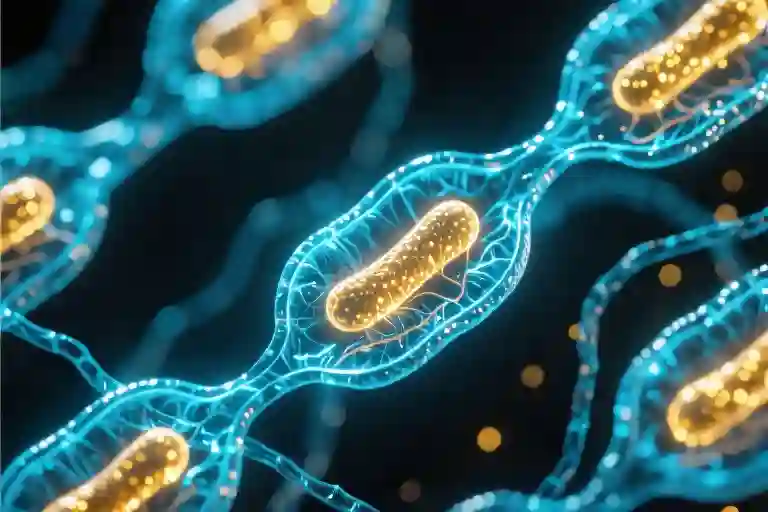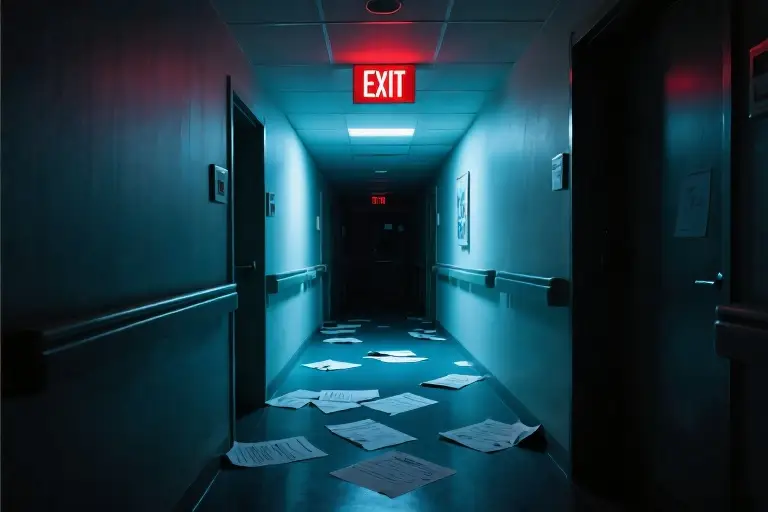The DSM-5 catalogs 297 distinct mental health diagnoses – an exhaustive taxonomy that shapes how we understand psychological suffering. Yet emerging research reveals what may be a startling oversimplification in the opposite direction: mitochondrial dysfunction appears as a common biological thread weaving through this sprawling diagnostic tapestry.
This isn’t about dismissing the very real differences between someone experiencing bipolar disorder and another with PTSD. Rather, it’s recognizing that beneath these clinically useful distinctions might lie shared cellular machinery gone awry. The mitochondria – those tiny power plants humming inside every brain cell – could hold master keys to conditions we’ve traditionally treated as separate entities.
Before we continue, a brief disclosure. As a mental health practitioner trained in both conventional and integrative approaches, I navigate this terrain with professional humility. The science remains young, the clinical implications uncertain. What follows isn’t medical advice but an invitation to reconsider fundamental assumptions about mental health labels.
The implications ripple outward. If mitochondrial dysfunction contributes significantly to both major depression and schizophrenia spectrum disorders, what does that mean for diagnostic categories painstakingly constructed over decades? For pharmaceutical approaches targeting specific neurotransmitter systems? For patients who’ve built identities around particular diagnoses?
This perspective doesn’t erase the value of clinical distinctions that help match people with appropriate treatments. But it does challenge us to hold these categories more lightly, recognizing they may represent different manifestations of underlying biological vulnerabilities shaped by genetics, trauma, and environment. The mitochondria, it seems, might be where nature and nurture conspire to shape mental health.
Perhaps we’re witnessing the early stages of a paradigm shift – one where ‘What’s your diagnosis?’ becomes less important than ‘What’s your cellular energy capacity?’ and ‘What life experiences have strained your biological resilience?’ This isn’t reductionism, but integration: honoring both the complexity of human experience and the elegant simplicity of shared biological mechanisms.
The Diagnostic Dilemma: When Labels Obscure the Truth
The Diagnostic and Statistical Manual of Mental Disorders reads like an encyclopedia of human suffering – 297 distinct entries cataloging every conceivable variation of emotional distress. This sprawling taxonomy creates an illusion of precision, as if each cluster of symptoms represents a fundamentally separate condition requiring unique treatment approaches. Yet many clinicians know the uncomfortable reality: patients often receive multiple conflicting diagnoses over time, their symptoms stubbornly resisting these neat categorical boxes.
Consider Sarah’s story. At 28, she received her first psychiatric diagnosis – generalized anxiety disorder. Two years later, a new clinician added major depressive disorder to her chart. By 35, her fluctuating energy levels prompted a bipolar II diagnosis. Each label came with different medication regimens, each bringing new side effects but little lasting relief. ‘I felt like a jigsaw puzzle no one could solve,’ she recalls, ‘just accumulating more diagnoses instead of actual help.’
This diagnostic musical chairs isn’t rare. Research shows nearly half of psychiatric patients eventually qualify for multiple DSM diagnoses, with symptoms overlapping across mood, anxiety, and psychotic disorders. The boundaries between conditions remain frustratingly porous – fatigue appears in both depression and anxiety; difficulty concentrating features in ADHD and PTSD. We’ve created an elaborate classification system that often obscures more than it reveals.
Behind this diagnostic confusion lies an uncomfortable question: What if we’re categorizing symptoms rather than identifying root causes? The DSM operates like a field guide to surface phenomena – noting behavioral and emotional patterns without explaining why they cluster in particular ways. It’s as if we’ve meticulously classified different types of coughs (dry, wet, whooping) while remaining blind to the shared lung inflammation underlying them all.
Emerging research suggests mitochondrial dysfunction may represent psychiatry’s equivalent of that underlying lung inflammation – a unifying mechanism manifesting through different symptom constellations. When cellular energy production falters, brain regions fail in predictable yet varied ways. The prefrontal cortex stumbles under cognitive demands (hello, ADHD symptoms). The amygdala becomes hypersensitive to threat (meet anxiety disorders). The reward system sputters (welcome, depression). Same root cause, different expressions.
This isn’t to dismiss the DSM’s clinical utility. Diagnostic labels help standardize communication, guide treatment protocols, and facilitate insurance reimbursement. They give patients language to understand their experiences and find communities of shared struggle. But we must recognize these categories as provisional maps, not the actual territory of mental suffering. As one psychiatrist confessed, ‘We diagnose based on what medications we have, not necessarily what biology shows.’
The limitations of our current diagnostic approach become painfully apparent in treatment resistance – those cases where patients cycle through multiple medications without improvement. If we’re treating the wrong level of the problem (symptoms rather than cellular energy deficits), no amount of diagnostic precision will help. Sarah eventually found stability not through another medication trial, but through interventions supporting mitochondrial function: targeted nutrients, circadian rhythm regulation, and graded exercise. ‘No one ever mentioned my cells’ power plants might be struggling,’ she notes. ‘They just kept relabeling the symptoms.’
Perhaps the most pernicious effect of over-reliance on diagnostic labels is the way they can narrow clinical vision. When we focus excessively on whether someone meets criteria for borderline personality disorder versus bipolar disorder, we risk missing the forest for the meticulously cataloged trees. The brain doesn’t care about our diagnostic categories – it simply manifests distress through the pathways available when its energy economy falters.
This isn’t an argument for abandoning diagnosis altogether, but for holding these labels more lightly – as provisional guides rather than definitive explanations. The real breakthrough may come when we stop asking ‘Which DSM box fits these symptoms?’ and start asking ‘What’s disrupting this person’s fundamental brain energy metabolism?’ That shift in perspective could transform mental healthcare from symptom management to root cause resolution.
The Mitochondrial Malfunction Theory: Your Brain’s Power Outage
We’ve all experienced that moment when our phone battery dips below 20% – the screen dims, apps stutter, and everything slows to a crawl. Now imagine your brain cells facing similar energy shortages. Emerging research suggests this might be the hidden story behind many mental health challenges, where mitochondria – those tiny cellular power plants – fail to keep the lights on.
These microscopic energy factories in every cell convert nutrients into ATP, the molecular currency of energy. When mitochondria underperform, neurons struggle to communicate, neurotransmitters misfire, and what we experience as depression, anxiety, or brain fog emerges. Studies show people with major depressive disorder often have 30% fewer mitochondria in certain brain regions, like dimmer switches turned too low in critical neural circuits.
Several landmark studies paint a compelling picture. A 2017 Nature Neuroscience paper found that inducing mitochondrial dysfunction in mice reliably produced behaviors mirroring human depression. Conversely, interventions supporting mitochondrial health – like CoQ10 supplementation or aerobic exercise – showed measurable improvements in mood disorders. The Psychiatric Genomics Consortium’s analysis of 250,000 individuals revealed shared mitochondrial DNA variations across schizophrenia, bipolar disorder, and depression diagnoses.
But here’s where it gets particularly interesting for anyone who’s struggled with mental health labels. Different DSM diagnoses show strikingly similar mitochondrial patterns. Brain scans of people with anxiety reveal the same metabolic slowdowns seen in ADHD brains. The fatigue crushing someone with depression shares biological roots with the cognitive ‘brain fog’ in PTSD. This overlap suggests our diagnostic categories might be describing different symptoms of the same underlying energy crisis.
Yet this biological perspective doesn’t diminish the very real psychological experiences. Think of it like a car engine sputtering – mitochondrial dysfunction creates the mechanical vulnerability, but life stressors press the accelerator. Chronic stress literally fragments mitochondria through cortisol overload, while childhood trauma leaves lasting epigenetic marks on these energy producers. The mind-body connection flows both ways: psychotherapy can actually improve mitochondrial function, likely by reducing the metabolic demands of constant fight-or-flight signaling.
What emerges isn’t a reductionist ‘it’s all biology’ argument, but a more nuanced understanding. Mental health struggles might begin as cellular energy deficits that make us more vulnerable to life’s storms. Recognizing this could shift how we approach treatment – not just managing surface symptoms, but addressing the root power shortages that make our neural networks unstable. The implications ripple outward: from reconsidering diagnostic labels to developing mitochondrial-supportive therapies, we might be standing at the threshold of a paradigm shift in mental healthcare.
The Other Half We Can’t Ignore: Trauma and Social Context
The mitochondrial dysfunction theory offers a compelling biological framework, but it’s only part of the story. Our mental health exists at the intersection of cellular processes and lived experiences – where biochemistry meets biography.
Chronic stress doesn’t just feel exhausting; it literally rewires our cellular power plants. Studies show prolonged cortisol exposure reduces mitochondrial density in the hippocampus by up to 40%. This isn’t abstract science – it’s what happens when someone endures years of workplace bullying, childhood neglect, or systemic discrimination. The body keeps score at the most fundamental level.
Several landmark studies demonstrate this interplay:
- Adults with PTSD show 30% lower mitochondrial DNA content than trauma-exposed controls
- Childhood adversity correlates with measurable oxidative stress markers decades later
- Social isolation predicts faster mitochondrial aging independent of genetic factors
Yet reducing mental health struggles to ‘faulty mitochondria’ risks repeating history’s mistakes. In the 1990s, the ‘chemical imbalance’ theory of depression, while partially valid, led many to overlook how poverty, trauma, and social isolation contribute to that imbalance. As Dr. Rebecca Jones, a clinical psychologist at Columbia University, notes: ‘When we medicalize distress too aggressively, we risk pathologizing normal reactions to abnormal circumstances.’
This isn’t academic debate – it has real clinical consequences. Consider two patients with identical mitochondrial dysfunction:
- A CEO experiencing burnout from 80-hour workweeks
- A single mother working three jobs under constant financial threat
Both might benefit from mitochondrial support supplements, but only addressing the biological component for the second patient would be like giving asthma medication to someone in a smoke-filled room without helping them leave.
Diagnostic labels, for all their limitations, serve vital functions:
- Insurance systems require codes for treatment coverage
- Patients often find relief in having a name for their suffering
- Some conditions (like bipolar disorder) have distinct enough patterns to warrant specific categorization
The challenge lies in holding both truths: that mental health conditions share underlying biological mechanisms, and that these mechanisms are profoundly influenced by our environments. Perhaps instead of asking ‘Is it biology or trauma?’ we should ask ‘How does trauma become biology?’ – and crucially – ‘How can we reverse that process?’
Emerging epigenetic research suggests our mitochondria maintain what some scientists call ‘metabolic memory’ of past stressors. This explains why two people with similar trauma histories might have different mental health outcomes – their cells literally remember differently. The hopeful implication? If negative experiences can get ‘under the skin,’ so too might healing ones.
This perspective transforms how we approach treatment. Therapy isn’t just ‘talking’ – it’s potentially remodeling cellular energy production. Conversely, mitochondrial support (through nutrition, sleep, or supplements) may make someone more receptive to psychological interventions. It’s not either/or – it’s yes/and.
For patients, this dual awareness can be empowering. Recognizing that depressive symptoms stem partly from mitochondrial dysfunction doesn’t negate the reality of their divorce or job loss – it simply adds another dimension to their healing toolkit. As one patient recovering from depression told me: ‘Knowing my cells were struggling helped me stop blaming myself. But understanding how my childhood affected those cells helped me finally address old wounds.’
Rethinking Mental Health Care: From Labels to Personalized Support
The growing understanding of mitochondrial dysfunction as a potential common thread in mental health challenges invites us to reconsider traditional approaches to treatment. While diagnostic labels serve important administrative and clinical purposes, focusing solely on symptom categorization might lead us to overlook fundamental biological processes that transcend these artificial boundaries.
For clinicians, this emerging perspective suggests a dual-path approach. First, considering basic cellular health markers becomes essential – things like oxidative stress levels, ATP production, and mitochondrial DNA integrity. Simple interventions such as recommending omega-3 fatty acids, CoQ10 supplementation, or mitochondrial-supportive nutrients like magnesium and B vitamins could complement traditional therapies. Second, maintaining awareness that these biological factors interact dynamically with psychological and social elements creates opportunities for more holistic treatment plans.
Patients navigating this new understanding might find empowerment in several ways. Tracking energy patterns throughout the day could reveal connections between mitochondrial function and symptom fluctuations. Simple lifestyle adjustments – prioritizing sleep hygiene, managing light exposure, and incorporating movement breaks – may support cellular energy production. When discussing treatment options with healthcare providers, patients can ask informed questions like: “Could my symptoms relate to cellular energy issues?” or “Would tests for mitochondrial function be appropriate in my case?”
The practical implications extend beyond individual treatment decisions. Insurance systems built around diagnostic codes may need to adapt to accommodate this more nuanced understanding. Research funding could shift toward investigating cross-cutting biological mechanisms rather than disorder-specific studies. Most importantly, this perspective helps reduce the stigma often associated with mental health diagnoses by reframing challenges as variations in human biology rather than personal failings.
What makes this approach particularly promising is its potential for personalization. Unlike one-size-fits-all diagnostic categories, mitochondrial function exists on a spectrum and responds to individualized interventions. Some might benefit most from nutritional support, others from stress reduction techniques that indirectly improve cellular health, and many from carefully balanced combinations of various approaches.
As we integrate this understanding into clinical practice, we’re not discarding the value of decades of psychiatric research and experience. Instead, we’re adding another dimension to our toolkit – one that acknowledges both the complexity of human experience and the fundamental biological processes that underlie it. The path forward involves holding multiple truths simultaneously: that diagnostic labels serve practical purposes, that shared biological mechanisms exist across diagnoses, and that each person’s journey toward mental wellness remains uniquely their own.
Beyond the DSM: A New Vision for Mental Health
The psychiatric landscape feels overdue for a fundamental shift. With 297 DSM diagnoses currently mapping the territory of mental suffering, we’ve become adept at creating subdivisions where perhaps none exist in nature. The emerging science of mitochondrial dysfunction invites us to consider a radical simplification – not by dismissing psychological complexity, but by recognizing a potential common ground where diverse symptoms may converge.
Recent studies in metabolic psychiatry suggest we might be standing at the threshold of a Copernican moment. Imagine if depression, anxiety, and even schizophrenia spectrum disorders represented different manifestations of what’s essentially an energy crisis at the cellular level. This isn’t to reduce rich human experiences to mere biochemical equations, but to acknowledge that our current diagnostic categories may reflect historical accidents more than biological realities.
Several research teams are already working beyond diagnostic boundaries. The Stanford Metabolic Psychiatry Clinic, for instance, reports remarkable outcomes by treating mood disorders with mitochondrial-supportive protocols, regardless of DSM labels. Their approach considers symptoms as clues to underlying metabolic disruptions rather than as definitive diagnostic markers. Patients who previously cycled through multiple medication trials without relief often show improvement when therapies address cellular energy production directly.
This paradigm shift carries profound implications for treatment development. Pharmaceutical research could pivot from symptom-specific drugs to mitochondrial modulators that might benefit multiple conditions. Early-stage compounds like PPAR-gamma agonists, which enhance mitochondrial function, have shown promise across diagnostic categories from bipolar disorder to PTSD in preliminary trials. The traditional ‘one diagnosis, one drug’ model may give way to personalized metabolic profiling.
The research frontier extends beyond biochemistry. Innovative studies are examining how trauma literally rewires mitochondrial DNA, creating measurable differences in cellular energy production that correlate with psychiatric symptoms. This work bridges the artificial divide between ‘biological’ and ‘psychological’ models of mental illness, showing how life experiences become biologically embedded.
Clinical practice would transform under this new paradigm. Instead of lengthy diagnostic interviews focused on symptom checklists, clinicians might incorporate simple metabolic markers – blood tests for mitochondrial function, inflammatory markers, or nutrient levels – into standard assessments. Treatment plans could combine targeted nutritional support with traditional psychotherapy, acknowledging that healing occurs at both cellular and experiential levels.
For patients, this evolving understanding offers both validation and hope. The woman who’s been given five different diagnoses over ten years might finally understand her symptoms as variations of an underlying metabolic pattern rather than as unrelated illnesses. This perspective can reduce the shame often attached to psychiatric labels while empowering individuals with concrete ways to support their biology.
The road ahead isn’t without challenges. Insurance systems built around diagnostic codes would need adaptation. Medical education would require substantial updates. And crucially, we must avoid replacing one reductionism with another – mitochondrial health is part of the story, not the entire narrative. The best future practice will likely blend metabolic insights with psychological and social understanding.
What might this mean for you? If you’re a clinician, consider how metabolic factors might explain treatment-resistant cases. If you’re struggling with mental health symptoms, discuss mitochondrial testing with your provider. And for all of us, this emerging science invites a fundamental question: As we learn more about the biological unity underlying mental distress, how might we build a mental health system that reflects this interconnected understanding?
The conversation starts here. Where would you like to see mental health care evolve in the next decade?
Perhaps future textbooks will group depression, anxiety, and bipolar disorder under a single chapter titled ‘Energy Metabolism Disorders’—and that day may arrive sooner than we imagine. This isn’t science fiction but an emerging reality grounded in mounting evidence about mitochondrial dysfunction’s role in mental health. The implications ripple far beyond academic debates, touching how we diagnose, treat, and fundamentally understand psychological suffering.
The current paradigm of 297 DSM diagnoses resembles an overgrown garden where labels multiply while root causes remain obscured. Yet beneath this tangled foliage lies a shared biological thread: cellular power plants failing to fuel the brain adequately. This perspective doesn’t invalidate individual experiences but reframes them through a unifying lens—where depressive exhaustion and anxious hypervigilance might represent different manifestations of the same energy crisis.
What makes this moment pivotal isn’t just the science, but its potential to humanize mental healthcare. When we recognize that traumatic memories and mitochondrial membranes both shape symptoms, we stop asking ‘what’s wrong with you’ and start exploring ‘how can we restore your energy.’ Clinicians might soon prescribe morning sunlight alongside SSRIs, knowing light wavelengths directly stimulate mitochondrial repair. Support groups could discuss magnesium-rich diets with the same urgency as coping strategies.
The resistance to such changes will be real. Diagnostic labels serve practical purposes—insurance codes, research criteria, clinical shorthand. But clinging solely to these categories risks missing the forest for the trees. A patient’s ‘bipolar II’ diagnosis tells little about whether their neurons have sufficient ATP to regulate moods, just as ‘PTSD’ alone doesn’t reveal how childhood adversity altered their cellular stress response.
This isn’t about discarding psychology for biochemistry, but weaving them together. Talk therapy remains essential because words can literally reshape brain metabolism—studies show effective counseling improves mitochondrial function. Likewise, nutritional interventions fail without addressing the emotional contexts driving poor dietary choices. The most promising treatments will dance across this mind-body continuum.
For those navigating mental health challenges, this evolving understanding offers quiet liberation. Symptoms become less about personal failure and more about physiological processes awaiting support. The fatigue crushing your mornings? Possibly malfunctioning electron transport chains. The panic attacks? Perhaps an overworked amygdala starved of energy. These aren’t reductions but revelations—roadmaps pointing toward multifaceted healing.
As research accelerates, we’ll likely discover mitochondrial health isn’t the only shared mechanism, but part of a larger symphony including inflammation, gut ecology, and neural plasticity. The DSM’s rigid categories may gradually give way to dynamic profiles mapping each person’s unique biological and biographical terrain. Some clinics already pilot this approach, combining genetic testing with trauma histories to personalize treatments.
Where does this leave us today? In a hopeful liminal space—still using existing frameworks while preparing for their evolution. You might ask your prescriber about medications’ mitochondrial effects, or explore how yoga nidra boosts cellular energy. Researchers can design studies comparing traditional diagnoses to metabolic biomarkers. Clinicians might notice when a ‘treatment-resistant’ patient simply needs mitochondrial support.
The revolution won’t happen through a single breakthrough, but through countless small shifts—a nutritionist recommending B vitamins for anxiety here, a psychiatrist testing for oxidative stress there. Each step acknowledges that mental health was never just in our heads, but in every cell’s ability to power our lived experience. And that realization changes everything.





